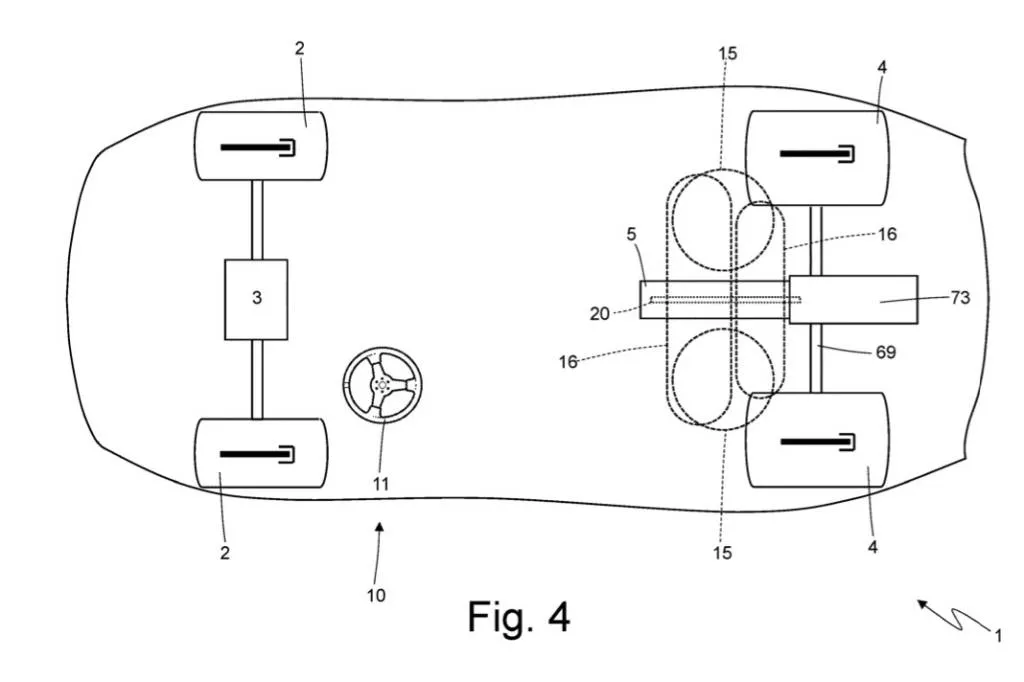Ferrari has filed a patent application for a side exhaust system, which could give its future road cars a different look.
The application in question was published by the United States Patent and Trademark Office (USPTO) on March 28, and was originally filed by Ferrari on Aug. 24, 2023. In it, Ferrari discusses an asymmetrical design, with the exhaust exiting out of one side of the bodywork between the rear edge of the door and the forward edge of the rear fender. It is to be used on cars with the engine positioned behind the driver, which would mean mid-engine for Ferrari.
Ferrari side exhaust patent image
The point of this seems to be enhancing exhaust sounds. Ferrari says in the application that creating a pleasing exhaust note is becoming more challenging because of turbochargers and the gasoline particulate filters now required on new cars sold in the European Union. These devices lower the sound level of the exhaust, Ferrari notes.
A side exhaust would move the exhaust outlet closer to the passenger compartment, potentially counteracting some of the muffling caused by turbos, particulate filters, and other necessary equipment like catalytic converters. Interestingly, Ferrari points to two classic race cars from rival automakers—the Aston Martin DB3S and Porsche 962 C—as examples of the efficacy of its promised asymmetrical side-exhaust design.

Ferrari side exhaust patent image
Side exhaust has been used on production cars such as the Dodge Viper, but it’s not normally associated with Ferrari. The automaker has come close with cars such as the 250 Testa Rossa, which had exhaust pipes running along the side of the car while still exiting at the back, but it hasn’t used side exhaust on any volume production models.
Ferrari also mentions in the application that side exhaust could be used in conjunction with a hydrogen-powered internal-combustion engine, something the automaker discussed in another recent patent filing (figure 4 shows round hydrogen storage tanks). Ferrari views burning hydrogen instead of gasoline as a way to reduce emissions while keeping combustion engines alive. But the viability of that technology remains in doubt.


